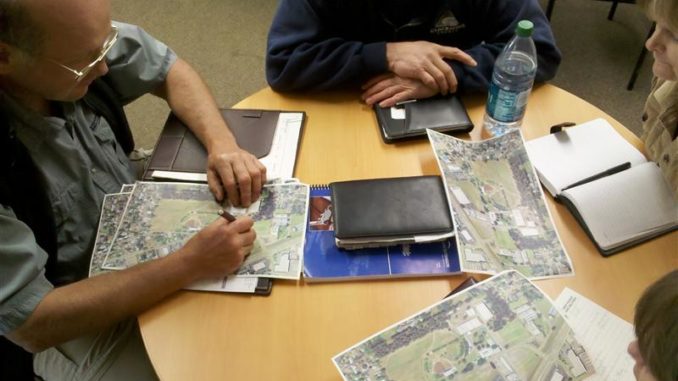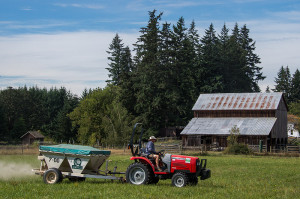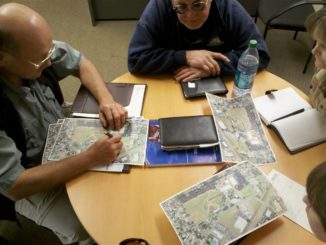

The Beavercreek Demonstration Farm is a 15-acre property with a century-old barn and farmhouse, various outbuildings, a wood lot, two ponds, and several grass fields. For the past several decades the farm has been used to raise llamas and alpacas.
Water rights for irrigation and fish rearing using the two ponds came with the property. The large pond is spring fed and is the source of irrigation water for the grass fields.
The farm is iconic in the Beavercreek Community and is easily found along Beavercreek Road. The tree-lined driveway to the 100-year-old farmhouse is an attractive feature of the property.
What have we done?
The District has made repairs to the farm house, and we’ve used it for several small meetings. During the summer and early fall, we provided an ADA-accessible portable toilet for use by visitors. This was especially important for our annual dinner that was held at the farm in late August.
Fences have been evaluated and invasive weeds have been treated in many places around the farm. Late in the summer, we worked to control gopher and mole populations.
To maintain our water right, we irrigated every inch of the land area included in the water right. This was also a good test of the pump and irrigation system.
We’ve moved our rental equipment to the farm and have been providing the large no-till drill, the aerator, and the manure wagon to folks this fall. We’ve used the aerator ourselves on two fields, after we spread pelletized lime on the main fields. A gate was installed on the driveway to help protect our equipment at the farm.
An inventory of the plants, birds, and other animals on the property has been initiated. A number of folks are participating in this process, including staff and a local bird expert.
We set up a special website to help document what we find and learn at the farm.
What will we do?
We want to retain the delightful rural character of the farm. That means, at minimum: maintaining the grass fields; preserving the old barn; maintaining the large pond; and keeping as many trees as possible.
We will continue to invest in the health of the grass fields. Soil test results showed low pH and nutrient levels. The soil is depleted in nutrients so we plan to continue adding lime to bring soil pH levels up, and we’ll fertilize to bring nutrient levels into line with what grass needs to thrive. In 2014, we plan to pasture and mow the fields instead of hay them. We hope to be able to use animals to improve nutrient cycling on the fields, thereby demonstrating good pasture management.
There are some hazard trees on the property that need immediate attention. An old cherry tree near the farm house has substantial rot and could hit the house. Several of the mature fir trees have been dropping dead limbs on the outbuildings, so some pruning and possibly some tree removal may be needed. If we remove any mature fir trees, we would try to get a custom mill on site to cut lumber to match what we need to repair the barn.
We’ll continue to work on controlling invasive species in the fields, around the buildings, and along the fences.
The long-term outlook for this property is exciting to ponder. The District would love to be headquartered at the farm, but we don’t reach the end of our five-year office lease until 2019. That gives us plenty of time to be very thoughtful about future actions involving this property.
Meanwhile, we’ll continue to host some meetings and workshops at the farm while we continue to build a long-range plan for this unique property.
How to participate
We need help of various kinds, particularly help with the farm. If you have ideas, comments, or concerns, please contact District Manager Tom Salzer.
